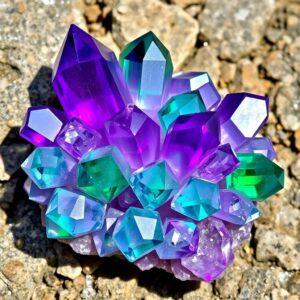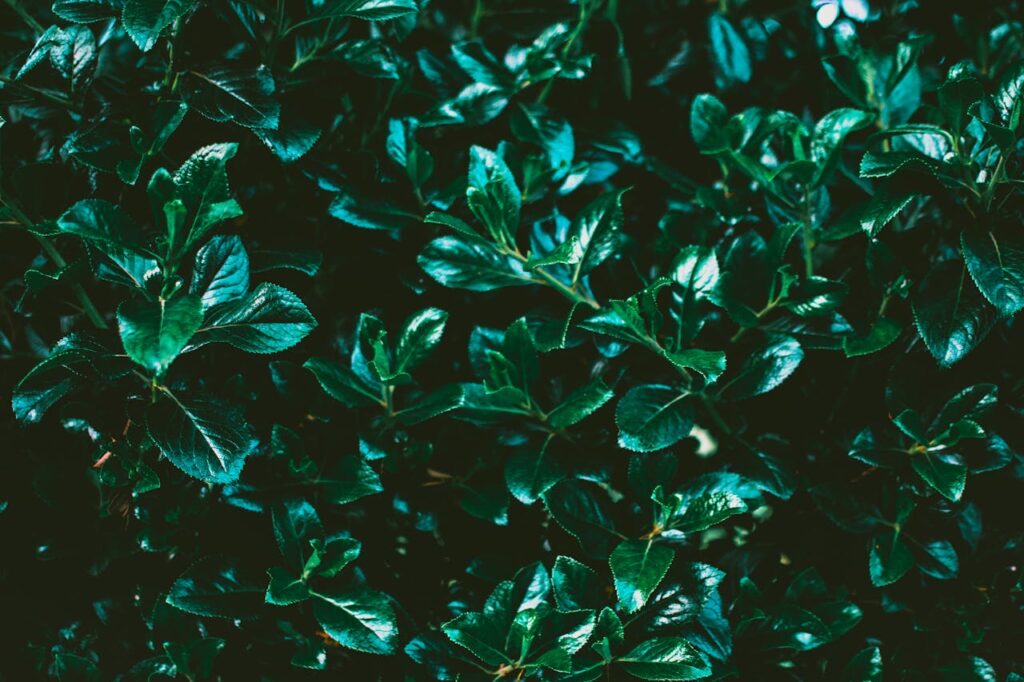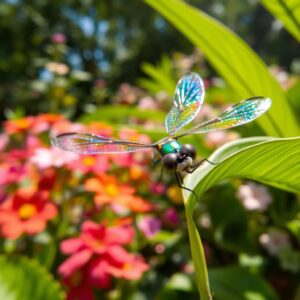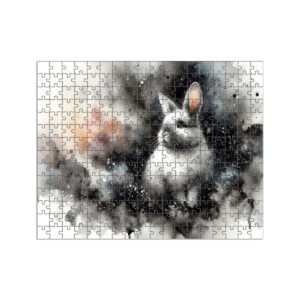
Explore & Play
Discover interesting topics and solve the accompanying crossword puzzle.
Bush Crossword | Beauty and Care of Various Shrubs
Explore the Bush crossword and uncover the beauty of popular shrub varieties in our detailed article, highlighting their unique features and care tips.
Table of Contents
Welcome to our engaging exploration of shrubs! Before diving into the article, we invite you to try your hand at the Bush crossword. It’s a fun way to familiarize yourself with popular shrub varieties. Alternatively, if you’re new to this topic, feel free to read the article first and then return to the crossword for a rewarding challenge. Enjoy your journey into the world of shrubs!
Bush Crossword
You can either fill in the crossword puzzle directly on this page or click the button in the bottom right corner to print it for free.

The Beauty of Shrubs: A Guide to Popular Bush Varieties
Shrubs, often overlooked in favor of larger trees and flowers, are essential components of any garden, providing beauty, structure, and habitat. These versatile plants come in various shapes, sizes, and colors, making them perfect for landscaping, privacy screens, or even as focal points in your outdoor space. In this article, we’ll explore popular shrub varieties, their unique characteristics, and how to incorporate them into your garden. Plus, check out our crossword puzzle featuring various popular bush varieties to engage with the content even further!
1. Understanding Shrubs
What Are Shrubs?
Before diving into specific varieties, it’s essential to understand what shrubs are and their roles in ecosystems. Shrubs are woody plants that typically have multiple stems and are smaller than trees, usually ranging from 1 to 15 feet in height. They are often characterized by their dense foliage and can be deciduous or evergreen.The Ecological Role of Shrubs
Shrubs play a crucial role in the environment. They provide habitat for various wildlife species, including birds, insects, and small mammals. Additionally, shrubs help prevent soil erosion, improve air quality, and contribute to the overall health of an ecosystem. By incorporating shrubs into your garden, you are not just enhancing its beauty but also supporting local wildlife and promoting biodiversity.2. Popular Shrub Varieties
Boxwood
Boxwood (Buxus spp.) is a classic shrub known for its dense, evergreen foliage. Often used for hedges and topiaries, boxwoods can be easily shaped into various forms, making them a favorite in formal gardens. To maintain their lush appearance, regular pruning is essential, and they thrive in well-drained soil and partial to full sun.Holly
Holly (Ilex spp.) is famous for its spiny leaves and bright red berries, especially around the holiday season. This evergreen shrub not only adds color to your landscape but also serves as an excellent wildlife habitat. Plant holly in a spot that receives full sun for optimal berry production, and be sure to include both male and female plants for successful pollination.Azalea
Azaleas (Rhododendron spp.) are beloved for their stunning spring blooms that can transform any garden. With various colors and sizes, azaleas can suit any landscape. They prefer acidic soil and partial shade, making them perfect for woodland gardens. Regular watering and mulching help retain moisture, ensuring vibrant blooms each year.Hydrangea
Hydrangeas (Hydrangea spp.) are a garden favorite for their large, showy flowers that can change color based on soil pH. They thrive in moist, well-drained soil and can be planted in full sun or partial shade. Regular pruning helps maintain their shape and encourages new growth, ensuring a beautiful display year after year.Forsythia
Forsythia (Forsythia spp.) is one of the first shrubs to bloom in spring, with its bright yellow flowers heralding the season’s arrival. This fast-growing shrub is perfect for creating a stunning spring display. Plant forsythia in full sun for the best results, and trim it back after flowering to encourage bushier growth.Lilac
Lilacs (Syringa spp.) are cherished for their fragrant blooms, which can fill the air with sweet scents in late spring. These deciduous shrubs thrive in well-drained soil and full sun, making them an excellent choice for cottage gardens. Regular pruning helps maintain their shape and promotes healthy flowering.Rose
Roses (Rosa spp.) are iconic shrubs known for their stunning blooms and sweet fragrances. With various types, including climbing, shrub, and hybrid varieties, there’s a rose for every garden. Plant them in a sunny spot and ensure they receive adequate water and nutrients for optimal growth.Lavender
Lavender (Lavandula spp.) is an aromatic shrub prized for its fragrant purple flowers and calming scent. This drought-tolerant plant thrives in full sun and well-drained soil, making it a perfect addition to low-maintenance gardens. Regular pruning after flowering helps maintain its shape and encourages more blooms.Dogwood
Dogwood (Cornus spp.) is known for its beautiful flowers and unique bark. This versatile shrub can serve as a focal point in your landscape, attracting pollinators with its blooms. Dogwoods prefer well-drained soil and partial shade, making them suitable for various garden styles.Barberry
Barberry (Berberis spp.) is a thorny shrub often used for security hedges due to its dense, spiky foliage. This hardy plant can thrive in various soil types and conditions, making it an excellent choice for low-maintenance gardens. Its bright berries also provide visual interest throughout the year.Spirea
Spirea (Spiraea spp.) is valued for its delicate flowers and lush foliage. This easy-to-grow shrub comes in many varieties, each offering unique characteristics. Spirea thrives in full sun and well-drained soil, and regular pruning encourages a more compact growth habit.Weigela
Weigela (Weigela spp.) is known for its attractive, trumpet-shaped flowers that bloom in late spring. This adaptable shrub can tolerate various soil types and conditions, making it an excellent choice for novice gardeners. Regular pruning helps maintain its shape and encourages prolific blooming.3. Unique and Lesser-Known Shrubs
Beautyberry
Beautyberry (Callicarpa americana) is celebrated for its vibrant purple berries that appear in late summer. This shrub thrives in well-drained soil and full sun to partial shade, making it a great choice for mixed gardens. Its unique berries attract birds and add visual interest to any landscape.Elderberry
Elderberry (Sambucus spp.) is not only an ornamental shrub but also known for its health benefits. The dark berries can be used to make syrups and jams. Elderberry prefers moist, well-drained soil and full sun, and it can be a valuable addition to any edible landscape.Ninebark
Ninebark (Physocarpus opulifolius) is a unique shrub characterized by its peeling bark and attractive flowers. This hardy plant can thrive in various conditions, making it an excellent choice for low-maintenance gardens. Its interesting bark provides visual interest throughout the year.Chokeberry
Chokeberry (Aronia spp.) is known for its tart fruits and stunning fall foliage. This adaptable shrub thrives in various soil conditions and is often used for naturalizing landscapes. Chokeberries are also beneficial for wildlife, attracting birds and other pollinators.Potentilla
Potentilla (Potentilla fruticosa) is a low-growing shrub that produces bright yellow flowers from spring to frost. This hardy plant thrives in full sun and well-drained soil, making it a great choice for rock gardens and borders. Regular pruning encourages bushier growth and more blooms.Russian Sage
Russian sage (Perovskia atriplicifolia) is a drought-resistant shrub known for its aromatic foliage and lavender-blue flowers. It thrives in full sun and well-drained soil, making it perfect for low-maintenance gardens. Its unique color adds a striking contrast to other plants in your landscape.Cotoneaster
Cotoneaster (Cotoneaster spp.) is a versatile shrub known for its ground-cover capabilities and colorful berries. This hardy plant can thrive in various conditions and is excellent for erosion control. Cotoneaster can be used in mixed borders or as a standalone feature in your garden.Viburnum
Viburnum (Viburnum spp.) is a diverse genus that offers various species, each with unique features and benefits. Many viburnum shrubs produce fragrant flowers, colorful berries, and attractive fall foliage. They also attract wildlife, making them a valuable addition to any garden.Cistus
Cistus, or rockrose (Cistus spp.), is a hardy shrub known for its unique flower shapes and colors. This drought-resistant plant thrives in well-drained soil and full sun, making it perfect for Mediterranean-style gardens. Cistus adds a touch of the exotic to your landscape.Firethorn
Firethorn (Pyracantha spp.) is a thorny shrub that produces colorful berries, making it an excellent choice for security hedges. Its dense foliage provides excellent cover for birds and other wildlife. Plant firethorn in full sun for optimal growth and berry production.4. Aromatic Shrubs for Sensory Gardens
Jasmine
Jasmine (Jasminum spp.) is a fragrant shrub that adds a sweet scent to any garden. Known for its beautiful white and yellow flowers, jasmine thrives in well-drained soil and full sun. Incorporating jasmine into your garden creates a delightful sensory experience.Fuchsia
Fuchsia (Fuchsia spp.) is recognized for its colorful, pendulous flowers that attract hummingbirds. This versatile shrub can thrive in partial shade and well-drained soil. Fuchsia is perfect for hanging baskets or mixed borders, adding a vibrant touch to any landscape.Salvia
Salvia (Salvia spp.) is an aromatic shrub known for its spikes of colorful flowers and fragrant leaves. This drought-tolerant plant thrives in full sun and well-drained soil, making it an excellent choice for low-maintenance gardens. Salvia also attracts pollinators, enhancing biodiversity in your garden.Nandina
Nandina (Nandina domestica) is a versatile shrub that features colorful foliage throughout the seasons. Its unique leaves range from green to red, creating visual interest all year round. Nandina thrives in partial shade and well-drained soil, making it an excellent addition to any garden.5. Designing with Shrubs
Layering for Visual Impact
Incorporating shrubs into your landscape design can create layers of texture and color. Start by considering the height of the shrubs you choose. Place taller varieties at the back of borders and shorter ones in front to create depth.Color and Bloom Times
When designing your garden, think about the color and bloom times of the shrubs you select. Grouping plants with similar colors or bloom times can create a harmonious look. For example, pair vibrant hydrangeas with delicate azaleas for a stunning spring display.Theme-Based Combinations
Consider specific themes for your shrub combinations. For instance, a cottage garden may feature a mix of lilacs, roses, and lavender, while a modern landscape could showcase minimalist designs with boxwood and ornamental grasses. By carefully selecting shrubs that complement each other, you can create a cohesive and inviting outdoor space.6. Caring for Your Shrubs
Watering and Fertilization
Proper care is essential for healthy, thriving shrubs that enhance your landscape. Ensure your shrubs receive adequate water, especially during dry spells. Deep watering encourages root growth and resilience. Additionally, applying a balanced fertilizer in early spring can provide essential nutrients for optimal growth.Pruning and Maintenance
Regular pruning is vital for maintaining the shape and health of your shrubs. Prune deciduous shrubs in late winter or early spring before new growth begins. For evergreens, light pruning can be done in late spring to maintain their shape. Remember to remove any dead or diseased branches to promote overall health.Pest and Disease Management
Common pests such as aphids and spider mites can affect shrub health. Regularly inspect your plants for signs of infestations. Introducing beneficial insects or using organic insecticidal soaps can help manage pest problems. For diseases, prompt removal of infected foliage can prevent further spread.7. Embracing the Charm of Shrubs
Shrubs are more than just filler in a garden; they are valuable assets that bring beauty, biodiversity, and functionality. Their diverse forms, colors, and textures can transform any landscape, creating a haven for both people and wildlife. By selecting the right varieties and caring for them properly, you can enjoy the numerous benefits that shrubs provide in your garden. Now that you’ve explored the beauty and variety of shrubs, why not take your knowledge a step further? Engage with our crossword puzzle featuring popular bush varieties and test your understanding of these remarkable plants!Share to...
Thank you for reading 👋
I hope you enjoy the content.
I hope you enjoy the content.
Want to receive our daily crossword puzzle or article? Subscribe!
You may also be interested in
Share to…
Want to receive our daily crossword puzzle?
-
Jigsaw Puzzles
Art Nouveau Jigsaw Puzzle with Betta Fish in Lush Garden Scene 250 | 300 | 500 Pieces
kr 348,00 – kr 439,00Price range: kr 348,00 through kr 439,00 Select options This product has multiple variants. The options may be chosen on the product page -
Jigsaw Puzzles
Zodiac Series Tiger Ink Puzzle – Black and White Art 250 | 300 | 500 Pieces
kr 348,00 – kr 439,00Price range: kr 348,00 through kr 439,00 Select options This product has multiple variants. The options may be chosen on the product page -
Jigsaw Puzzles
Chinese Zodiac Rabbit Jigsaw Puzzle – Ink Art Series 250 | 300 | 500 Pieces
kr 348,00 – kr 439,00Price range: kr 348,00 through kr 439,00 Select options This product has multiple variants. The options may be chosen on the product page

















